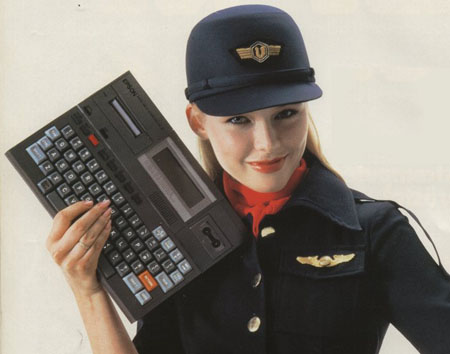
Posted on 05/08/2007 12:28:06 PM PDT by ShadowAce
It's the original UMPC: Epson's HX-20, announced in 1981 - 25 years before Intel and Microsoft formally launched the ultra-mobile PC category, in April 2006.

Epson's machine wasn't the first portable computer - that honour goes to the Osborne 1. But while the Osborne was a beast of a machine, designed more as a desktop you could take from place to place, the HX-20 was a truly a system for computing on the move.
So while the HX-20 combined not only a full QWERTY keyboard, a display, storage and even a printer into its 28.4 x 21.3 x 4.4cm casing, but also a rechargeable Ni-Cad battery. A charged power pack could keep the HX-20 running for an amazing 40 hours away from the mains - a staggering figure by today's standards, where getting four or five hours out of a laptop battery is a major achievement.
It was reasonably portable too: a laptop-like 1.7kg/3lbs.
The HX-20's display was a monochrome LCD panel capable of rendering 20 characters on four lines. The (noisy) dot-matrix printer was situated to the left of the screen, ready to dump out hard copy at 17 characters a second, 24 characters per line, on a 5.6cm-wide roll of paper.
To the right of the display was a covering that could be removed to allow an optional cassette deck that fit flush with the case. An alternative version had the deck built in. The drive took the tiny cassettes used primarily by dictation devices, reading and writing data at 1300 baud (1.3Kbps). A 30-minute tape could hold about 50KB of data.
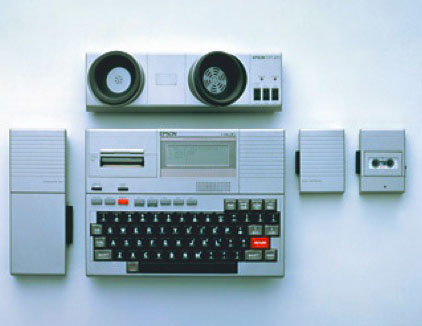
Need more? Then hook up an external cassette player via the mic, earphones and control ports on the side of the HX-20. The unit also has low- and high-speed RS-232 serial ports - one at 38.4Kbps, the other set to 4.8Kbps - a proprietary "expansion port" and a connector for a barcode reader.
Internally, the HX-20 was fitted with 16KB of memory, upgradeable to 32KB, and connected to the machine's twin processors, one to do the processing and control the display and keyboard, while the other looked after the cassette, the printer and the serial ports. The CPUs were 8-bit Hitachi 6301s, clocked at just over 600kHz.
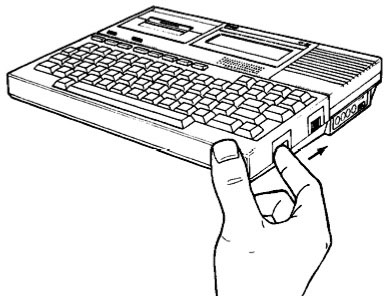
Like so many machines from the early 1980s, the HX-20 used the Basic language for programming, with a separate option, Monitor, to provide the kind of functions we'd expect from an operating system these days. The HX-20's version was called EBasic and was developed for Epson by Cambridge, Massachusetts-based Ski Soft. Apparently, there wasn't much software available for the machine at the time, but as we did in those days, we wrote our own.

Epson continued to sell the HX-20 through to 1987 and possibly later. The company continues to host a support page (http://www.epson.com/cgi-bin/Store/support/supDetail.jsp?BV_UseBVCookie=yes&infoType=Overview&oid=14492) for the device. Check it out: you'll find copies of the manual - including details on how to set the unit's language using DIP switches - and an old Basic quick reference guide.

You'll note the Apple II used for comparison in the above ad. Apple itself will still show you how to hook an HX-20 up to a Mac (http://docs.info.apple.com/article.html?artnum=2499), albeit one with an old-style Apple serial port. ![]()
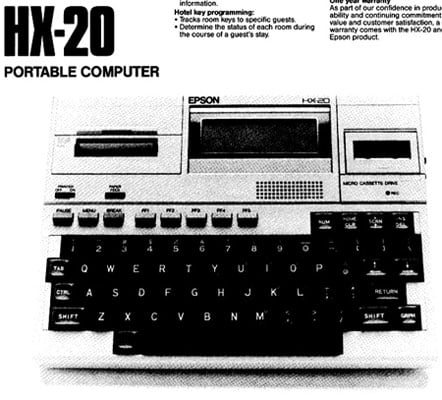

I’ll bet that girl still looks great, 26 yrs later.
The good ole days of the cassette tape load and ‘walkie-talkie’ style modems pushing data at a screaming 300bps.
I am looking for simple flower designs......
What?!?
No picture of that first Compaq portable (uh, luggable)?
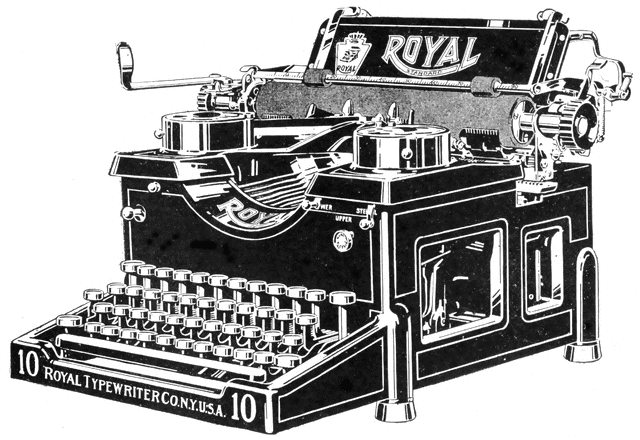
Royal had a UMPC long before that even.
...probably get it for a song.
heh—My MIL has an old Underwood
There’s a lot of ASCII art still kicking around out there, here’s one good repository.
She looks a little like Kim Basinger.
Thank you!! I couldn’t figure out what it was called!!
Before Alec maybe. No scars or black eyes.
I thought the first UMPC was the Banana JR 6000.

Nice.
I still have both Epsons.
I remember when it was called typewriter art and was distributed via photocopier. Then the age of usenet made it easier to distribute and changed the name.


I had a Kenpro 8088 of my own. It was a step up from the Commodore 64. :)
Disclaimer: Opinions posted on Free Republic are those of the individual posters and do not necessarily represent the opinion of Free Republic or its management. All materials posted herein are protected by copyright law and the exemption for fair use of copyrighted works.